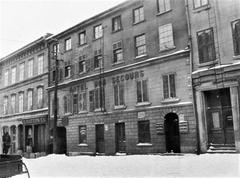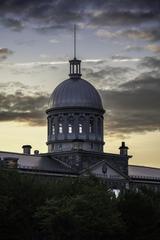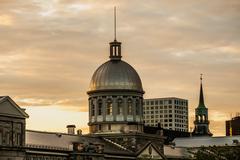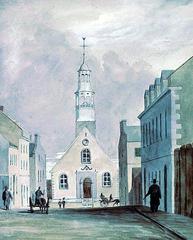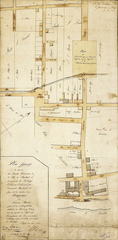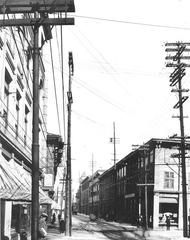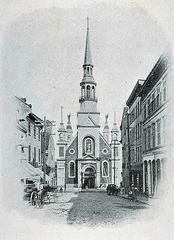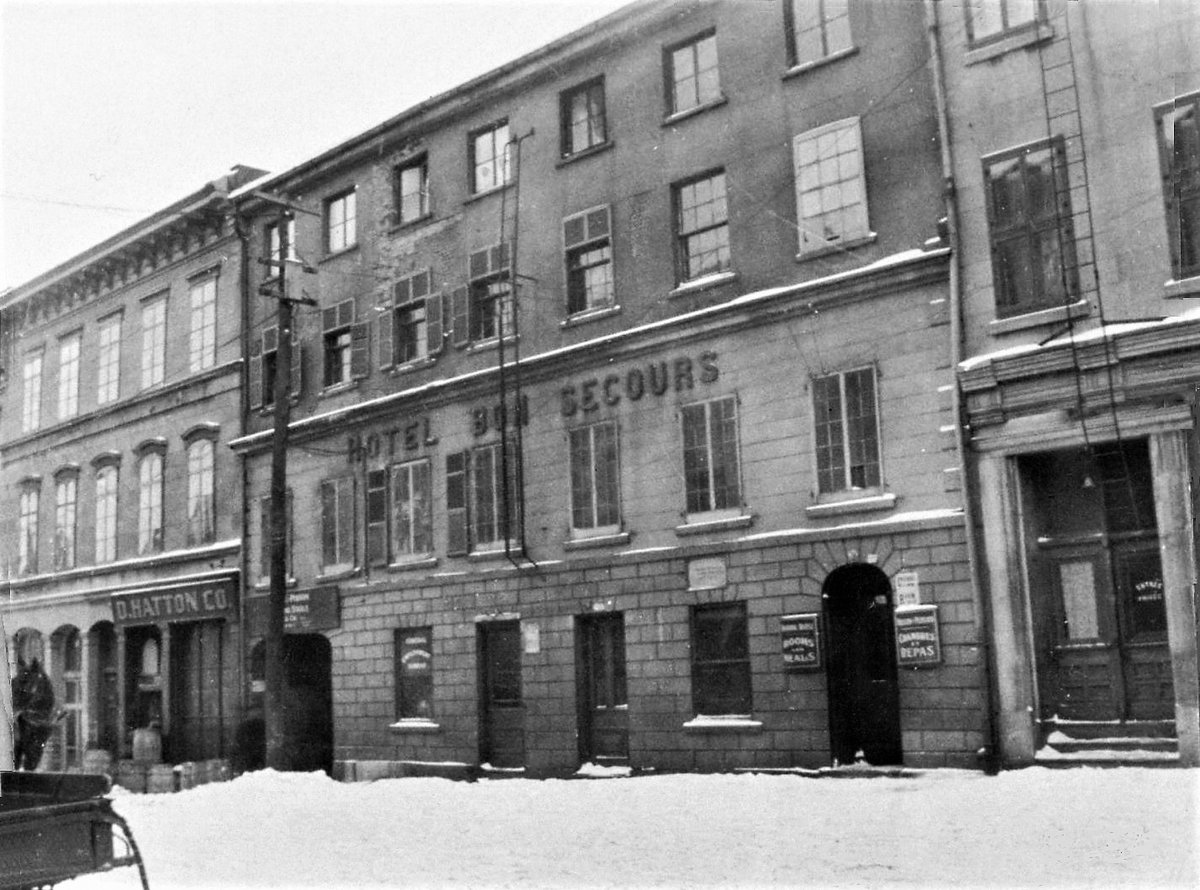
Rue De Bonsecours Montreal Visiting Hours, Tickets, and Historical Sites Guide
Date: 15/06/2025
Introduction to Rue De Bonsecours Montreal and Its Historical Significance
In the heart of Old Montreal, Rue de Bonsecours stands as a testament to the city’s colonial roots and vibrant cultural present. Lined with cobblestones and framed by centuries-old architecture, the street is renowned for its landmarks—most notably the Notre-Dame-de-Bonsecours Chapel, affectionately called the “Sailors’ Church,” and the iconic Marché Bonsecours with its silver dome. Founded in the 17th century, Rue de Bonsecours has witnessed Montreal’s transformation from a modest French colony to a cosmopolitan metropolis. The street’s heritage is woven into the city’s spiritual, social, and architectural fabric, offering visitors a unique journey through time.
This guide provides essential information on visiting hours, tickets, accessibility, and how to make the most of your stroll along Rue de Bonsecours. Whether your interests lie in history, art, architecture, or simply soaking up local culture, you’ll find everything you need to plan a memorable visit here. For planning resources, see Grand Québec, The Canadian Encyclopedia, and The Tourist Checklist.
Table of Contents
- Introduction
- History and Urban Evolution
- Architectural Highlights
- Visiting Hours and Ticket Information
- Accessibility and How to Get There
- Special Events, Guided Tours, and Festivals
- Nearby Attractions
- Visitor Tips and FAQs
- Conclusion and Additional Resources
1. History and Urban Evolution
Early Origins
Rue de Bonsecours traces its origins to the mid-1600s. Marguerite Bourgeoys, a pioneering educator and founder of the Congrégation de Notre-Dame, established a wooden chapel in 1657. This became a spiritual anchor for the fledgling community, situated between the town center and surrounding agricultural lands (Grand Québec). By 1675, the wooden chapel was replaced with a more permanent stone structure, marking a new chapter in Montreal’s development (Wikipedia).
Naming and Expansion
The street was named after the Notre-Dame-de-Bonsecours Chapel, evoking “Good Help” and reflecting its role as a sanctuary for sailors and townsfolk (Wikipedia). By the late 17th century, a lane called Saint-Victor connected the chapel to the river. The Sulpicians, Montreal’s seigneurs, reserved land that eventually became Rue de Bonsecours, which was officially named in 1758 (Grand Québec). Following the dismantling of Montreal’s fortifications in the 19th century, the street expanded northward and was further developed and widened in 1823.
2. Architectural Highlights
Rue de Bonsecours is a showcase of Montreal’s evolving architecture, with notable sites including:
Notre-Dame-de-Bonsecours Chapel
Known as the “Sailors’ Church,” this chapel features a stone façade, copper roof, and ship models suspended from the rafters—prayers for safe passage by mariners (The Tourist Checklist). The chapel houses the Marguerite Bourgeoys Museum, which explores the legacy of its founder and the city’s earliest schools.
Marché Bonsecours
A neoclassical masterpiece completed in 1847, Marché Bonsecours is recognized for its gleaming silver dome and elegant Greek columns (Simple Travel and Recreation). It has served as a market, city hall, and even a temporary Parliament, and today hosts artisan boutiques, galleries, and cultural events (The Canadian Encyclopedia, IMTL, Bonsecours Market Official Website).
Maison Pierre du Calvet
One of Montreal’s oldest residences, this 1770 French colonial home at 405 Rue de Bonsecours is now a boutique hotel and fine dining restaurant, allowing visitors to experience the ambiance of New France (Grand Québec, Roaming Historian).
Maison Papineau
Located at 440 Rue de Bonsecours, Maison Papineau was home to the influential Papineau family and is significant for its role in political and social history (Wikipedia).
3. Visiting Hours and Ticket Information
Marché Bonsecours
- Hours: Monday to Sunday, 10:00 AM–6:00 PM; hours may extend during festivals (Bonsecours Market Official Website).
- Admission: Entry is free; some exhibitions or events may require tickets.
Notre-Dame-de-Bonsecours Chapel
- Hours: Daily, 10:00 AM–5:00 PM; last entry typically 30 minutes before closing. Hours may vary seasonally (Marguerite Bourgeoys Museum).
- Tickets: Approximately CAD 7 for adults, CAD 5 for students/seniors; children under 12 free. Includes admission to the museum.
- Guided Tours: Available in French and English; book online or at the entrance for an in-depth visit.
Maison Pierre du Calvet & Maison Papineau
- Hours & Tickets: Access is mainly through guided tours or by reservation. Check official sites for up-to-date schedules and prices.
4. Accessibility and How to Get There
- Accessibility: Marché Bonsecours features ramps and elevators; the chapel and museum have adapted facilities, but cobblestone streets and historic buildings may pose challenges. Contact venues for specific accommodations (Montreal City Website - Rue Bonsecours).
- Metro: Champ-de-Mars or Place-d’Armes stations are a short walk away.
- Bus: Several routes serve Old Montreal.
- By Car: Limited parking; public transit or walking is recommended.
- Cycling: Bike lanes and BIXI stations are nearby.
5. Special Events, Guided Tours, and Festivals
Rue de Bonsecours and its surroundings host an array of festivals and events year-round:
- Artisan Markets and Craft Fairs: Held inside Marché Bonsecours.
- Cultural Festivals: Including Montreal International Jazz Festival, Les FrancoFolies de Montréal, and Mtl en Arts.
- Seasonal Events: Holiday markets in winter, open-air exhibitions and performances in summer.
- Guided Walking Tours: Focused on history, architecture, and art, often available in multiple languages (Roaming Historian).
6. Nearby Attractions
- Old Port of Montreal: Waterfront promenade, boat tours, and seasonal activities.
- Place Jacques-Cartier: Bustling public square with performers, outdoor terraces, and proximity to Rue de Bonsecours (Time Out Montreal).
- Pointe-à-Callière Museum: Archaeology and history museum delving into Montreal’s roots.
- Montreal Science Centre: Family-friendly exhibits and IMAX theatre.
7. Visitor Tips and Frequently Asked Questions
Visitor Tips
- Footwear: Wear comfortable shoes for cobblestone streets.
- Schedule: Check official websites for up-to-date hours and event info.
- Photography: The chapel tower and market façade offer excellent photo spots.
- Language: French is primary but English is widely spoken.
- Payments: Canadian dollars (CAD) used; credit/debit accepted broadly.
- Dining: Numerous cafés and restaurants are within walking distance.
Frequently Asked Questions
Q: What are the main visiting hours for Rue de Bonsecours attractions?
A: Marché Bonsecours: 10:00 AM–6:00 PM; Notre-Dame-de-Bonsecours Chapel: 10:00 AM–5:00 PM. Hours can vary seasonally.
Q: Is there an admission fee?
A: Entry to Marché Bonsecours is free; the chapel and museum charge a small fee.
Q: Is the area wheelchair accessible?
A: Marché Bonsecours is accessible; some historic buildings have limited access due to their age.
Q: Are guided tours available?
A: Yes, at major sites and through local tour companies.
Q: How do I get there?
A: By metro (Champ-de-Mars or Place-d’Armes), bus, cycling, or on foot from Old Montreal.
8. Conclusion and Call to Action
Rue de Bonsecours encapsulates Montreal’s enduring spirit, blending history, architecture, art, and vibrant community life. From the solemn halls of the Notre-Dame-de-Bonsecours Chapel to the lively artisan markets of Marché Bonsecours, the street offers a captivating experience for all visitors. To make the most of your visit, check current schedules, plan around seasonal events, and consider guided tours for deeper insights.
For real-time updates, guided tour options, and event notifications, download the Audiala app. Follow us on social media for daily inspiration and explore our related articles for more on Montreal’s historical and cultural treasures.
References and Official Links
- Grand Québec – Rue de Bonsecours
- Wikipedia – Rue de Bonsecours
- The Canadian Encyclopedia – Marché Bonsecours
- The Tourist Checklist – Things to Do in Old Montreal
- Simple Travel and Recreation – Montreal Bonsecours Market
- IMTL – Marché Bonsecours
- Roaming Historian – Things to Do in Montreal
- Montreal Guardian – Old Photographs of the Bonsecours Market
- Bonsecours Market Official Website
- Time Out Montreal – Place Jacques Cartier
- Montreal Tourism Official Portal
- Montreal City Website – Rue Bonsecours
